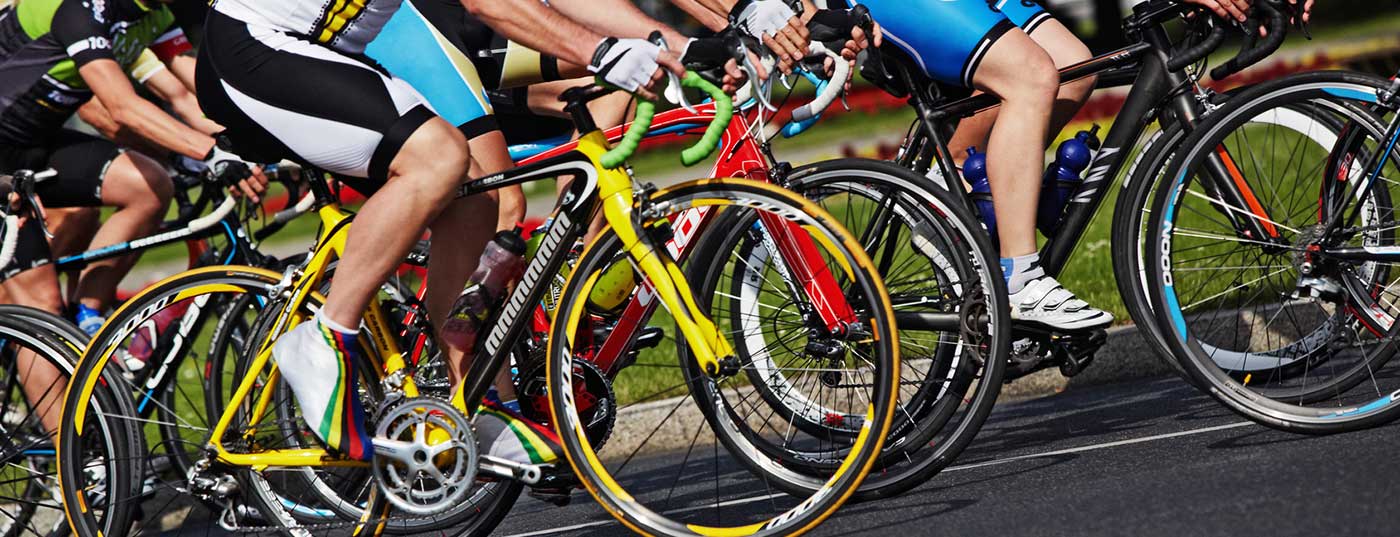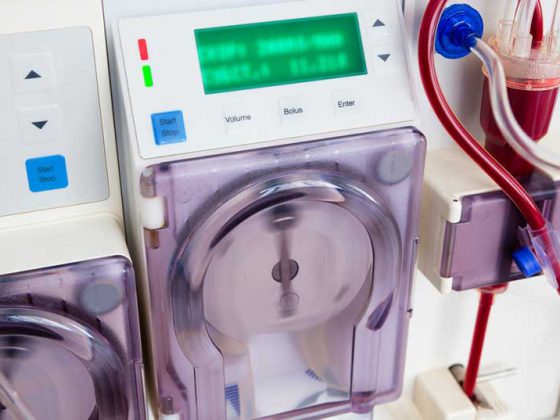Blood pressure is subject to great fluctuations and depends on physical activity and psyche. What do healthy people and people with arterial hypertension have to keep in mind when exercising? What positive effects on blood pressure can be expected? One thing is certain, athletes represent a special population due to their specific dietary habits and medication regimen in the hypertension history. Therapeutically, it is also important to note that certain antihypertensive agents are prohibited in competitive sports.
A certain didactic film has accompanied me throughout my medical career: At the bottom of the screen, a pointer fluctuates to indicate the intra-arterially measured blood pressure of a man engaged in his daily activities. Deep and calm during sleep, responding with high spikes to the alarm clock, slowly rising while driving in heavy traffic on the way to work, again with spikes during an obviously excited phone call – and most spectacularly, with some spikes above 300 mmHg, when immersed in cold water following a sauna session. This film showed in the most convincing way how the parameter “blood pressure”, contrary to what is still believed, is anything but fixed and stable (without necessarily feeling anything from these large fluctuations). The dependence on physical activity and mental states such as anxiety, anger, and excitement is noteworthy.
Sport in healthy people
Acute response: In healthy individuals, it can be simplified (but correctly) stated that on the occasion of dynamic aerobic activities with low to moderate force input (e.g. jogging, cycling) the systolic blood pressure increases linearly, while the diastolic blood pressure remains unchanged, so to speak. Because of the greater use of power in cycling, the climb is somewhat steeper than in running.
The situation is different with static forms of exertion such as strength training: due to an increase in peripheral vascular resistance, the pressure work of the heart is increased; accordingly, systolic and diastolic blood pressure rise significantly more and the diastolic value at the end of the performance can be higher than the systolic resting value. At maximum force loading, as can occur in weight lifting, values up to more than 400 mmHg are measured because of press respiration. However, it may be claimed that a healthy vascular system is not endangered by this.
It is interesting to note that immediately after the acute physical stresses, the blood pressure values drop below the baseline values. This situation can last for several hours and must definitely be taken into account during blood pressure checks in order not to underestimate the daily mean value.
Chronic response: we have talked about the acute situation, much more interesting is the chronic response of the organism to physical activity. Again, a blanket statement can be made that regular exercise lowers both systolic and diastolic blood pressure. This assertion is based on meta-analyses and thus on a large number of studies. The reduction in normotensives averages 3 mmHg systolic, 2 mmHg diastolic. This blood pressure-lowering effect occurs after only three weeks to three months in most studies, but it does not increase with continued activity. On the other hand, after interruption of the training, it subsides within two to three weeks and the former values are reached again.
According to various studies, these blood pressure effects seem to be independent of age and gender, in other words, everyone can benefit from this primary prevention. After all, that’s what it’s all about: early physical activity, if possible in childhood, significantly reduces the risk of hypertension later in life. Conversely, it has been convincingly shown that obesity (high BMI) and poor physical condition – both combined with little exercise – promote pathologically high blood pressure (when both factors accumulate, there is an increase by a factor of 3.53).
This reduction in blood pressure via exercise is explained by a reduced sympathetic tone with re-setting of the baroreceptors (measurable by the decrease in plasma noradrenaline concentration), by an overall vasodilation, and by an increased sodium excretion (reduced Na reabsorption, probably explainable by exercise-induced hypoinsulinism). This last factor is very interesting because hypertension is often associated with other pathologies of the metabolic syndrome. In addition, the release of circulating vasodilating substances or the decrease of renin should also be mentioned.
This extremely positive effect can be achieved with a training workload of three to five times a week for 30-60 minutes at 50-60% of maximum capacity.
Arterial hypertension – “the silent killer
The big problem is that the fluctuating, unstable biological parameter “blood pressure” very readily gets out of control and shoots up permanently. This is called arterial hypertension. It is estimated that about 30% of adults in Switzerland suffer from high blood pressure, with more than 60% of those over 60 affected. The World Health Organization (WHO) estimates that more than 1.5 billion people worldwide will suffer from this disease in 2025. One out of four adults, then! This is serious because arterial hypertension is the greatest risk factor for the occurrence of cardiovascular events such as stroke, heart failure or coronary heart disease, but also for the progression of chronic renal failure as well as the gradual decline of cognitive functions in the elderly. This highly negative situation is paradoxical, since scientific knowledge about this disease and its treatment has steadily improved and become clearer in the past. Apparently, however, they are not yet sufficient to neutralize the “silent killer”. It is estimated that hypertension remains uncontrolled in up to 50% of those affected. This is despite the fact that a reduction in systolic pressure of 2 mmHg can already reduce the risk of cardiovascular events by up to 10%. Probably several factors are responsible for this unfortunate phenomenon, a low therapy adherence of patients on the one hand, but possibly also a certain physician inertia.
Sport for hypertension
The described high incidence of arterial hypertension makes it inevitable that quite a few athletes suffer from this disease. Since hypertension is basically asymptomatic – at least at the beginning – it is probably discovered rather by chance, e.g. on the occasion of a sports medical examination. The diagnostic process is identical to that of the non-athlete. In younger athletes, care must be taken to ensure that the normal values are not those of adults. However, experience shows that in the hypertensive patient who exercises or wants to exercise, special guidance is of necessity and advantage.
Basically, the behavior of blood pressure during various forms of physical activity in hypertensive patients is similar to that in normotensive patients. However, at comparable exercise intensity, blood pressure values are higher because baseline values are higher before exercise. Interestingly, in the long term, the pressure reduction is somewhat more pronounced than in normotensives, averaging 7 mmHg systolic, 6 mmHg diastolic. A value not to be underestimated!
The specifics of the athletic hypertensive patient lie in the medical history. While the diagnosis itself is made in the same way as for non-athletes, a physician must additionally inquire anamnestically about pressure-inducing agents such as anabolic steroids (also so-called “natural” ones such as guarana or ma huang) in athletes. Dietary habits must be queried, as consumption of fats or salt may be too high (sports drinks are high in salt). Perhaps the athlete regularly takes NSAID or diet pills, nutritional supplements and more. Factors such as fatigue and psychological stress are common due to the high demands of competitive sports. All these substances and elements can sensitively influence blood pressure. Of course, they will also assess lifestyle and in particular ask about unfavorable confounding factors such as smoking and alcohol consumption.
Hypertension Treatment
Whether athlete or non-athlete, confirmed hypertension belongs to treatment because it is now considered proven that treatment can reduce all-cause and cardiovascular mortality and decrease the complications mentioned above. Since about 2013, most international recommendations generally suggest a blood pressure below 140/90 mmHg or below 150/90 mmHg in elderly patients with isolated systolic hypertension as the goal of antihypertensive therapy. Since then, there have been other classifications in which grade divisions have been determined. This does not change the need to act. In mild to moderate hypertension, non-pharmacological therapy may be started calmly for a few months: Weight control, change in eating and drinking habits, smoking cessation, avoidance of unnecessary medications, or relaxation and stress management techniques. Regular endurance training is recommended.
Certain therapeutic agents are banned in professional sports
If these general measures do not get the problem under control, additional pharmacological treatment becomes unavoidable – which in the case of competitive athletes means: “Attention doping danger!” Diuretics are generally banned in competitive sports, and beta-blockers in certain sports such as shooting, etc. Experience shows that even with an ATZ entry (exceptional approval for therapeutic purposes), approval is granted only extremely rarely. So it is recommended not to start therapy with such means. Because the criterion “physical performance” is central to the drug therapy of athletes, products should be selected that behave metabolically neutral and do not influence the energy supply. The antihypertensive drugs of first choice are known to be the calcium antagonists, the ACE inhibitors, the AT1 blockers, the beta blockers and the diuretics.
The first three substances mentioned are unproblematic in terms of performance. Beta-blockers significantly limit performance during lactic anaerobic and aerobic exercise and produce premature muscle fatigue. Actually, diuretics would be very useful, but as already mentioned, they are generally banned because of their “masking” effect (making it more difficult to detect doping substances). In summary, drug therapy for elevated blood pressure in athletes is a relatively complex matter.
HAUSARZT PRAXIS 2017; 12(3): 3-6












